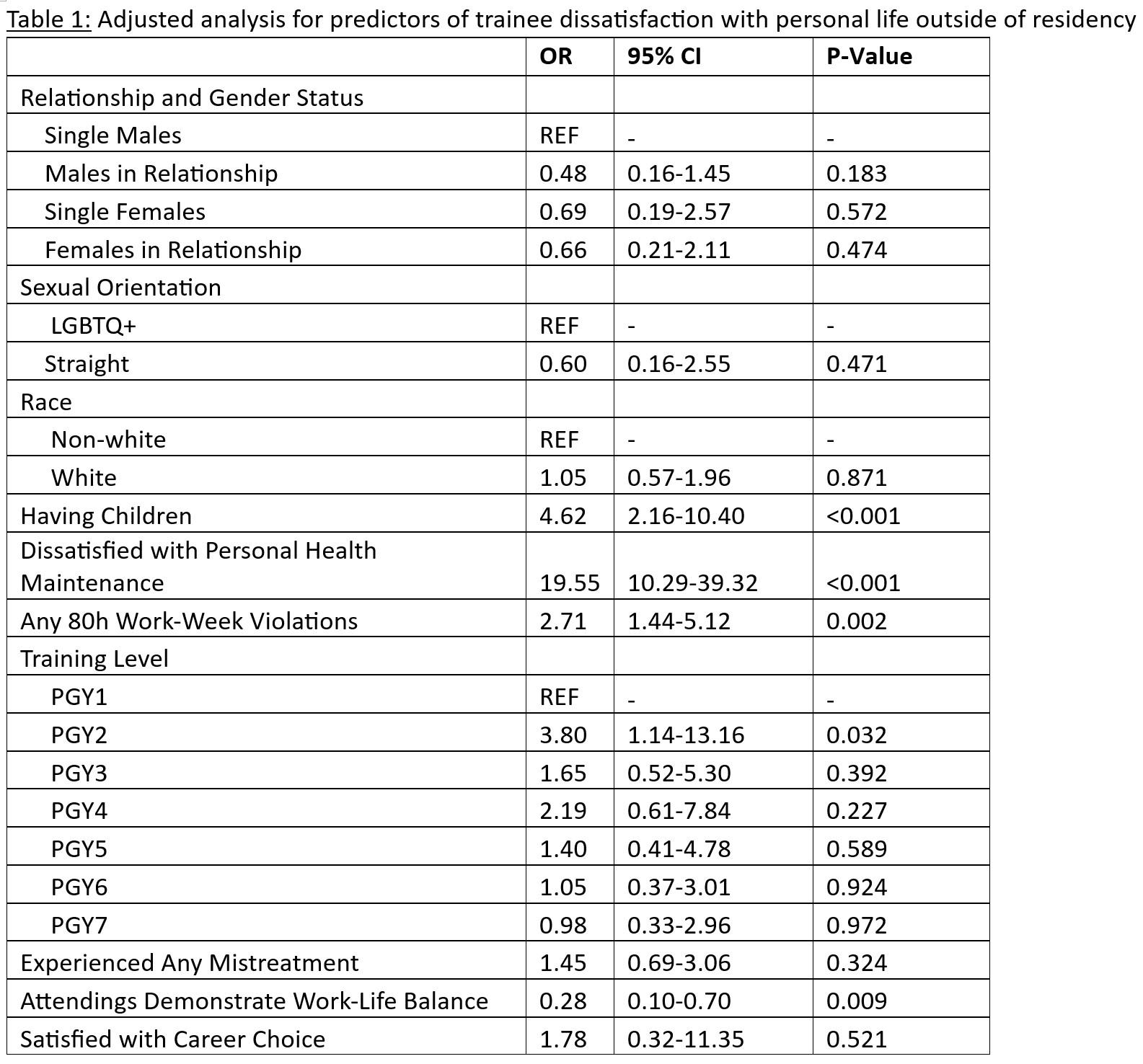OBJECTIVES: Surgical training provides an immense opportunity for growth, but often occurs during pivotal years for personal development. The purpose of this study is to evaluate the structural, cultural, and demographic factors that impact satisfaction in the personal lives of trainees enrolled in vascular surgery training programs. METHODS: Data was collected from a confidential, voluntary survey administered after the 2023 Vascular Surgery In-Training Exam (VSITE). Results were obtained from trainees enrolled in both integrated residencies and traditional fellowships. Resident satisfaction with their personal life during training was measured using a 5-point Likert scale then dichotomized. Satisfaction with their career choice, ability to perform health maintenance, training program culture, and behavior modeling by attendings were similarly assessed. Multivariable logistic regression modeling was used to compare predictors of personal satisfaction. RESULTS: A total of 494 out of 521 eligible (94.8%) trainees completed the survey question, of which a majority were males (n=317, 61%). A total of 169 (34.2%) trainees reported dissatisfaction with their personal life outside of training. On unadjusted analysis, personal dissatisfaction was significantly associated with career dissatisfaction (p<0.001); however, this did not persist on adjusted analysis. Instead, having inadequate time to pursue personal health maintenance (OR: 22.6, 95% confidence interval [95%CI]: 10.3-39.3, p<0.001) and work hour violations (OR: 3.3, 95%CI: 1.4-5.1, p<0.001) were significant predictors. Having children (odds ratio [OR]: 4.9, 95%CI: 2.2-10.4, p<0.001) also predicted dissatisfaction, regardless of trainee gender. Having attendings with perceived work-life balance was protective (OR: 0.28, 95%CI: 0.1-0.7, p=0.009). Relationship status, gender, sexual orientation, race/ethnicities, training level, mistreatment, career satisfaction, and scheduling were not significant predictors. (Table 1) CONCLUSIONS: Most residents are satisfied with their career choice, even though more than one third of residents expressed dissatisfaction with their personal life outside of training. This finding was impacted by having children, inability to pursue personal health maintenance and working over hours. The presence of attendings who modelled work-life balance was protective. Further mixed methods research is needed to understand how modeling impacts both personal and professional growth. 